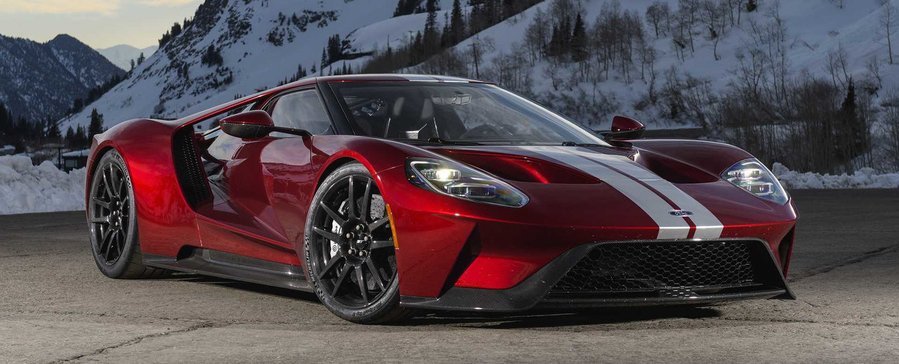We know the Ford GT is fast. That sort of thing happens when you put 647 horsepower into a car weighing just over 3,000 pounds, which is why it can accelerate like a UFO to a top speed of 216 miles per hour. If you were to stage the Ford next to Lockheed Martin's new F-35A Lightning II on a runway and wave a green flag, the $500,000 car would leave the $100 million fighter for dead – at least until the jet was airborne.
It's easy to make something go fast in a straight line, but we also know the Ford GT can turn corners. It claimed first, third, and fourth positions at Le Mans in 2016, and that's doesn't happen without some serious lateral ability. We know the GT's shape helps it stick to the pavement, but beneath the bodywork is a network of sensors, wiring, and computers that Ford says offers up more computing power than the aforementioned F-35.
To make that live for you, the automaker offered up some statistics on just how much thinking and analyzing the GT does. More than 50 different sensors communicate with no less than 25 computing systems, processing 300 MB of data each second, which is roughly the equivalent of downloading an hour-long television show. A total of 100 GB (or 100,000 MB) of data is generated each hour using 10 million lines of software code.
Does that mean the Ford GT does all the hard work for the driver? To some extent, yes. The computers do monitor and adjust the car's stability control system based on the settings selected by the driver, as most modern cars do. But the systems also regularly adjust engine, suspension, and aerodynamic parameters to deliver peak performance at all times, which some might argue makes the driver's job a bit harder.
It all sounds fabulous, but with Ford only building 1,000 cars over four years, we suspect most GTs will be kept from the public eye in private collections, never realizing their full potential on a track. Perhaps Ford will satiate us mere mortals by sending a few factory cars out on the airshow circuit, so we can really see how it stacks up against the F-35.

